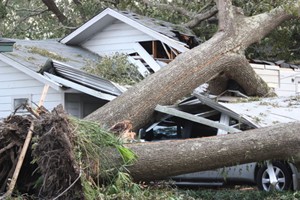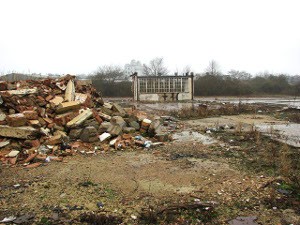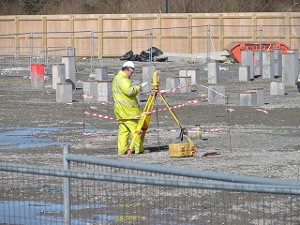Ashburnham Insurance Services Ltd
Finding the right business insurance for your company can be costly and time consuming. At Ashburnham Insurance Services we can help you find the best, most cost effective policy for you. Dealing with all companies from SMEs to large multi-nationals we provide a broad spectrum of business insurance products including:
- Public Liability Insurance
- Employer’s Liability Insurance
- Professional Indemnity Insurance
- Commercial Property Insurance
- Shop Insurance
- Office Insurance
Our experienced team can help with all your business insurance needs, from comparing quotes from trusted insurers to give you the most competitive deal to tailoring a policy to meet your specific needs.
-
Work Related Stress Statistics in Britain
19 October 2016According to HSE’s (Health & Safety Executive) Work Related Stress, Anxiety and Depression Statistics in Great Britain 2015 report, stress accounted for 35% of all work related ill health cases - or 43% of working days lost due to ill health (9.9 million days total).
The breakdown of work related mental ill health diagnoses shows stress, anxiety and depression dominating the total cases:
- Anxiety / Depression: 37%
- Post-Traumatic Stress Disorder (PTSD): 0%
- Other Stress: 56%
- Alcohol & Drug Abuse: 3%
- Other Diagnoses: 2%
- Other Stress Symptoms: 2%
Those most affected by work related stress often do not display signs of anxiety or depression. Stress at work is commonly caused by workload pressures such as tight deadlines, too much responsibility and lack of managerial support.
Occupations with highest levels of stress are ones common across public service industries such as education, health and social care, public administration and defence. Roles include health, teaching, business, media and public service professionals. Large enterprises (more than 250 employees) have the highest prevalence rate of work related stress with 1550 cases per 100,000 employed, in comparison to medium (less than 250 employees) with 1280 cases and small enterprises (less than 50 employees) with 910 cases per 100,000 employed.
The demographic that most suffers from work related stress, anxiety and depression are females between 45 to 54 years of age, but the figures across all age groups show women as more prone to stress than men.
Age Groups
Male
Female
All
1160
1790
16 - 24
500
990
25 - 34
1120
1630
35 - 44
1250
2090
45 - 54
1530
2180
55+
1070
1660
Work related stress claims are rare, despite the large numbers, due to the stigma attached to admission of stress. It can often feel like you’re “failing” at your job. Due to work-related stress being difficult to prove, claims can be difficult to win in court. But this doesn’t mean that the risks should be ignored, and managers and employers need to be sensitive to workers’ conditions and come across as approachable should an employee be suffering stress, anxiety or depression.
-
5 Most Common Construction Site Accidents
10 October 2016The construction sector accounts for approximately 6% of the UK workforce. The incidence rate of all self-reported workplace injuries is around 50% higher than all other industries. Though the past couple of decades has seen a downward trend in the rate of workplace injuries in the constructor sector, the figures show that the risk is still quite unsurprisingly high in comparison to other occupations.
Approximately 3% of construction workers sustain an injury at work - around 65,000 construction site workers reporting non-fatal workplace injuries. This accounts for about half a million working days lost annually.
For the purpose of this Top 5 Most Common Construction Site Accidents article, we are listing the Top 5 as "specified injuries" (or major injuries) defined by RIDDOR. Within the report, the construction sector comprises three broad industry groups:
- construction of buildings
- civil engineering
- specialised construction activities
1) Falls from a height
35% of specified injuries
Ladders and scaffolding walkways obviously pose great risk to workers. Sometimes things just come loose or simply were incorrectly secured to begin with.
2) Slips, trips or falls on same level
27% of specified injuries
There are a great many tripping hazards on a construction site. From cables to rubble to holes in the ground.
3) Struck by moving, including flying/falling, object
12% of specified injuries
Similar to the risks of workers falling from heights, objects can too. And when an object falls or is dropped from above, it can happen so fast that it's not always possible to move or even recognise the danger before it occurs. Though hard hats should always be worn on the construction site to protect your head, other serious injuries could include cuts, bruises, and crushes to other parts of the body.
4) Injured while handling, lifting or carrying
8% of specified injuries
All workers should be shown how to safely and properly lift heavy objects and carry them from one place to another. Incorrect handling of heavy objects can cause fractures and serious lower back pain over time.
5) Struck by moving vehicle
3% of specified injuries
Vehicles or mobile plant on the construction site should operate safely using specified routes and organised traffic management on site, to prevent serious injuries and fatalities.
Specified Injuries VS Over 7 Day Injuries
In accordance to RIDDOR, specified injuries can be defined as:
- fractures, other than to fingers, thumbs and toes
- amputations
- any injury likely to lead to permanent loss of sight or reduction in sight
- any crush injury to the head or torso causing damage to the brain or internal organs
- serious burns (including scalding) which:
- covers more than 10% of the body
- causes significant damage to the eyes, respiratory system or other vital organs
- any scalping requiring hospital treatment
- any loss of consciousness caused by head injury or asphyxia
- any other injury arising from working in an enclosed space which:
- leads to hypothermia or heat-induced illness
- requires resuscitation or admittance to hospital for more than 24 hours
Over-seven-day injuries are ones in which the worker is incapacitated and unable to perform their usual work duties for more than consecutive days as a result of their injury.
Top 5 Most Common Over-7-Day Injuries in Construction
- Injured while handling, lifting or carrying (29%)
- Slips, trips or falls on same level (21%)
- Falls from a height (11%)
- Struck by moving, including flying/falling, object (10%)
- Contact with moving machinery (7%)
Top 5 Fatal Injuries in Construction for the Last 5 Years
Over the past five years, there have been 217 fatal injuries in the construction sector. Almost half of all fatal injuries are caused by falls from height. The fatal injury rate is over 3.5 times the average rate across all industries.
- Falls from a height (45%)
- Trapped by something collapsing/overturning (13%)
- Struck by moving, including flying/falling, object (10%)
- Struck by moving vehicle (10%)
- Contact with electricity or electrical discharge (7%)
What risks do construction workers perceive to be most present?
In a 2014 survey commissioned by the European Union Occupational Safety and Health Agency in collaboration with HSE, participants (representing workplaces in the construction sector with 5 or more employees) were asked:
Which of the following risk factors are present in your establishment?
Physical risks are far more widely reported than psychosocial risks in the construction industry and, interestingly, this is also reflected in the lower than average levels of workplace stress, depression and anxiety when compared to other sectors.Employers working within the construction industry have a legal responsibility to their workers to ensure a reasonably safe working environment. Work related injuries across all industries are the responsibility of the employer, and you could be held liable. Employers Liability Insurance is a legal requirement, to ensure that all employees can receive compensation if they become injured whilst working for you. If you're worried about being held liable for trespassers or visitors injuring themselves on site, Building Site Insurance can protect you should the third party demand compensation for their injury.
-
Letting Your Property To Student Tenants: Pros & Cons
7 October 2016The past few years has witnessed a dramatic increase in the number of higher education students, due to government initiatives to encourage young people to stay in education for longer.
With a rise in the number of students, inevitably there is also a higher demand for student accommodation, and purpose-built halls of residence are slow to cater to these growing numbers. Due to this lack of availability, students are having to turn to off-campus student accommodation. Private landlords can make the most of this opportunity by letting their property to student tenants. But you may first want to consider the pros and cons of letting to student tenants.
Advantages to Letting to Student Tenants
Students tend to not be so fussy when it comes to the state of the property. It doesn’t need to boast the latest trends in interior design and home décor, so long as you provide the most basic of essentials such as bedroom furniture and kitchen utilities.
Houses with multiple rooms can easily house one tenant each. You may even want to convert the living room into a bedroom, unless you want to maintain it as a communal area for the students. This can result in high yields as you can charge rent per person rather than per property. Though to the individual student the rent may seem quite low, the yield from the property can easily add up to be more profitable. The closer the property is to a university, the more you can charge for rent and the easier it is to find student tenants.
Student tenancies are far more predictable. You can get into a seasonal flow of things; when your tenants are likely to move out or move in, how long they’ll be renting for, and more. This allows you to be better prepared for these events. Students will also start looking for accommodation ahead of the academic year, so you can line up students moving in and moving out well in advance.
- 69% of landlords and letting agents prefer to let to students.
- 84% agree that students make good tenants.
- 76.5% say that student lets generally lead to better yields
Disadvantages to Letting to Student Tenants
You will need to let the property as furnished. Student tenants are unlikely to be bringing along their own furniture and kitchen appliances. So furnishing the living room with sofas, making sure that the kitchen has a fridge freezer and oven, and simple bedroom furniture in each bedroom is necessary. This can be quite an expensive investment to begin with, so you should take out landlord contents insurance to cover your own items and furnishings. It is their responsibility however to insurance their own items.
Without generalising all students, costs of maintenance and repairs for the property and replacement of damaged furniture will have to be taken into account when setting the rent. Students may be more likely to hold parties or damage the property, accidentally or intentionally. It is wise to keep a detailed inventory of all supplied items and furniture, as well as the condition of the property itself.
Referencing tenants can be impossibly difficult if you attempt to use the standard process. They’re extremely likely to have been living with their parents prior to moving out for university, and will have had irregular income if any at all. It is therefore crucial that they have a guarantor to be financially responsible for the rent should you fail to receive it on time. You could also ask potential tenants for personal recommendations and references from their university. Many universities now offer these recommendation services for students looking to rent privately.
If you have at least three occupants living within the property, each with their tenancy agreement, you may need a HMO licence.
As your property is most likely to be your tenants’ first “home away from home”, they may exploit the lack of adult supervision and behave as one would expect - like students. They may make a mess, struggle to clean up for themselves or misunderstand their responsibilities as a tenant, but this is a learning phase for them. You might want to make it clear that they will be billed for any damages, or have the costs of repair taken out of their deposit, and give them each a “welcome pack” when they first move in. This could contain things like:
- rubbish day,
- recycling,
- how to work the various appliances,
- health and safety,
- security and locks,
- rules of the house,
- their responsibilities to you,
- and your responsibilities to them.
The summer holidays may be quiet if you’re in between tenants during this time, though some tenants may still want to remain in the property over this period. This may mean that your rental yield is lower during these months, but this time could be used to carry out repair and maintenance before the new tenants move in.
When it comes to landlord insurance, student tenants are considered to be “high risk” and may therefore affect your premium. But insurance is well worth taking out to financially protect your investment against the risks of storms, fire, malicious incidents, unforeseen accidents, public liability and loss of rent!
At Ashburnham, we can provide you with landlord insurance for student tenants!
Get a quote now online, or call us for free on 0800 1696137
-
10 Motivational Quotes on Failure from Famous Business Experts
26 September 2016The difference between failure and success is the decision to sink or swim. Do you give up and drown in your failure, or do you embrace the strong waves and swim toward shore with the will and determination to survive?
Failure can be immobilising, but this paralysis isn’t productive. To fail successfully, you need to have the courage to embrace the failure and learn from it. It’s all about perspective. This is why the most successful business people in life are where they are today. Experts in business are experts in failure. They possess the unique perspective that the majority of people unfortunately live without; the wisdom to perceive failure as a scenic detour toward success, not a fault in the track that causes you to derail.
Sometimes business isn’t doing so well, and it’s easy to think of yourself as being a failure. But before you feel too down, read these top 10 motivational quotes on failure from the world’s most inspiring business leaders and famous business experts.
Learn from failure. If you are an entrepreneur and your first venture wasn’t a success, welcome to the club!
– Richard Branson, founder of Virgin Group
My mother used to tell me, ‘failure is not the opposite of success, it’s a stepping stone to success’. So at some point, I learned not to dread failure. I strongly believe that we are not put on this Earth just to accumulate trophies and avoid failures; but rather to be whittled and sandpapered down until what’s left is who we truly are.
– Arianna Huffington, co-founder of The Huffington Post
It is fine to celebrate success, but it is more important to heed the lessons of failure.
– Bill Gates, co-founder of Microsoft
Failure is just a resting place. It is an opportunity to begin again more intelligently.
– Henry Ford, founder of Ford Motor Company
Winners are not afraid of losing. But losers are. Failure is part of the process of success. People who avoid failure also avoid success.
– Robert T. Kiyosaki, founder of the Rich Dad Company and Cashflow Technologies
For every failure, there’s an alternative course of action. You just have to find it. When you come to a road block, take a detour.
– Mary Kay Ash, founder of Mary Kay Cosmetics
Like success, failure is many things to many people. With positive mental attitude, failure is a learning experience, a rung on the ladder, and a plateau at which to get your thoughts in order to prepare to try again.
– W. Clement Stone, founder of Combined Insurance Company of America
Failure is success if we learn from it.
– Malcolm Forbes, publisher of Forbes Magazine
Would you like me to give you a formula for success? It’s quite simple, really. Double your rate of failure. You are thinking of failure as the enemy of success. But it isn’t at all. You can be discouraged by failure or you can learn from it. So go ahead and make mistakes. Make all you can. Because remember that’s where you’ll find success.
– Thomas J. Watson, Chairman and CEO of IBM between 1914 – 1956
Failures are like skinned knees, painful but superficial.
– Henry Ross Perot, founder of Electronic Data Systems and Perot Systems
-
Work Related Injuries by Industry (UK Statistics)
16 September 2016Approximately 1.2 million people each year suffer from a work related illness. In 2013/14, the cost of injuries and ill-health from current working conditions was estimated to be £14.3 billion.
In 2014/2015, work related illness and workplace injuries accounted for the loss of 27.3 million working days. There were 611,000 self-reported injuries which occurred at work, according to the Labour Force Survey.
- 198,000 self-reported injuries leading to over 3 day absence
- 152,000 self-reported injuries leading to over 7 day absence
- 78,000 employer-reported injuries
- 19,000 employer-reported specified injuries
Work Related Illness and Workplace Injuries by Industry
Prevalence Rate of Work Related Illness & Incidence Rate of Workplace Injury (per 100,000 workers):
Industry
Work Related Illness
Workplace Injury
Human Health / Social Work
4550 (4.6%)
2180 (2.2%)
Public Admin / Defence
4160 (4.2%)
2270 (2.3%)
Water Supply / Waste Management
4010 (4.0%)
2490 (2.5%)
Agriculture, Forestry & Fishing
3690 (3.7%)
4300 (4.3%)
Utility Supply
3630 (3.6%)
*
Education
3370 (3.4%)
1630 (1.6%)
Transport / Storage
3350 (3.4%)
2600 (2.6%)
Construction
3120 (3.1%)
3080 (3.1%)
Other Service Activities
3010 (3.0%)
1400 (1.4%)
Administrative & Support Service Activities
2820 (2.8%)
1600 (1.6%)
Financial & Insurance Activities
2740 (2.7%)
*
Manufacturing
2670 (2.7%)
2430 (2.4%)
Arts / Entertainment / Recreation
2600 (2.6%)
2120 (2.1%)
Real Estate Activities
2430 (2.4%)
*
Wholesale / Retail Trade
2420 (2.4%)
2080 (2.1%)
Professional, Scientific & Technical Activities
2420 (2.4%)
810 (0.8%)
Information & Communication
2410 (2.4%)
620 (0.6%)
Accommodation / Food Services
1800 (1.8%)
2730 (2.7%)
Mining & Quarrying
*
*
All Industries
3080 (3.1%)
1970 (2.0%)
Of course, these are just the injuries and illnesses which were reported as being work related. Experts believe that unreported illnesses and injuries account for half of the true figures.
-
How To Start A Handyman Business
7 September 2016A handyman business can be quite profitable if you consider yourself to be a “jack-of-all-trades”! Those lucky enough to have a broad range of maintenance and repair skills are able to offer more services. Not every handyman is a skilled gardener, electrician, plumber and appliance repairer. Many handymen offer limited services but specialise in one or two fields. You don’t need to be able to do everything. And anything you might not be able to do yourself, you can keep a black book of your own contacts and even take on a commission for any work you can pass off.
There’s a growing demand for handymen due to increasingly busy lifestyles where people may be able to do the job themselves but, between work and family, simply do not have the time. Then there are the jobs that most people just are not capable of doing themselves, as they lack the experience and knowledge.
One of the advantages of starting a handyman business is that the start-up costs can be reasonably affordable. Many handymen already having the majority of the tools needed available to them, and only need to get a few more supplies and pay for initial business start-up and promotion.
How do I get started in running my own handyman business?
The first thing to do if you’re seriously considering starting your own handyman business is to write up a business plan. This doesn’t have to be an official document, but it helps to plan a clear and concise direction including the range of services you will offer (everything from the small jobs like putting up a shelf, to the larger jobs that will take several days). Be as specific as you can when listing these services, and include the estimated time that it will take to complete these jobs and a base price to charge for each. It makes a lot more sense to charge by the job than charge by the hour. As your efficiency increases with each job, it will take less time to complete without affecting how much you are charging for the job completion. Do some local market research and see how other handymen in your area price their services.
Each service will obviously require its own set of tools too. So you may also want to list in your business plan what you will need for each service you offer, whether you own the necessary tools already and how much it will cost to buy or replace. Don’t forget to keep records of all businesses purchases you make!
You will also need to think about the sorts of customers you will be targeting and whether they will be private individuals or businesses. Additionally, you will also need to register a business name, so think of a unique but memorable business name to represent and promote your business.
What kind of insurance does a handyman need?
Customers may ask you whether you’re insured before you start any work. If you had to tell them that unfortunately you do not, not only are you risking business from one job but any jobs that this customer may have had for you in future, including for others via recommendation. If you’re insured, you can also state that on any promotional materials so that potential customers will see that you’re an insured professional.
Handyman insurance can financially protect your business if any unexpected incidents were to occur. As someone who works in other people’s homes or business premises, there is always a risk that you may accidentally cause damage to a customer’s property or even injure someone while you are working. For instance, you may accidentally damage a customer’s wall or splash paint onto their carpets or belongings. Or maybe you’re repairing the roof and a tool falls and injures a passer-by. Leaving yourself uninsured means that a single accident could potentially bring your entire business to its knees financially.
You may also be interested in Tools Cover as an extension to your public liability insurance, which will protect against the loss, damage or theft of your tools of the trade.
If you have a work van or vehicle that houses your tools and you use it to get around from job to job, you will need vehicle insurance to cover the business use of the vehicle.
How do I promote my handyman business?
Since the jobs you’ll be doing are going to be in your local area, think local when you’re planning your business marketing. Flyers and business cards in local shops and bulletin boards, ads in local newspapers, local Facebook groups… Branch out your business advertising across as many platforms as you can. Especially when those platforms are free.
Social media can be a great, free tool to promote your new business. It gives potential customers an easy way to contact you online with any questions about your services, and you immediately have large local communities to engage with and advertise yourself to. If you set up a Facebook business page, you can also ask for reviews from previous customers to help legitimise your business publicly and assure any potential customers that you are reliable and trustworthy for the job.
You may think a general handyman business isn’t a flashy enough business to warrant a fancy website, but a basic one-page website can be extremely cheap (or even free!) and easy to set up. On your website, you can list all your contact details and a full list of the services you offer. This will help people to find your business when they’re searching online for a handyman or a specific service in your area.
Does a handyman eventually need staff?
If business is doing very well and you find yourself having to turn down work, you may eventually want to consider hiring employees. To start off with, you may just have one or two people who you can call for a hand every now and again if you need to do some heavy lifting or what have you. But if you decide to expand the business, employing a couple of people may be a good idea. Employers’ liability insurance is a legal requirement for every employer, but you will additionally need to consider the cost of salaries too.
The best thing about hiring employees is that you can spread the skill set and offer more services that you previously couldn’t offer alone. Two people may be jacks of all trades, but one may be a qualified plumber, whereas the other may be a qualified electrician. If the business becomes large enough, you may even want to hire an office worker to take calls, attract more work online and handle the paperwork. This frees you up to focus on other areas of the business.
-
Who is liable for a trespasser¿s injury on a building site?
7 September 2016The summer is nearly over and property development site owners all over the country are sighing in relief. As idle children go back to school they become less likely to wander onto building sites in search of a new playground.
Every year, a large number of children (and adults alike!) will injure themselves on building sites, despite the fact that they weren’t allowed on the property to begin with.
Who is legally responsible for the injuries of trespassers?
The landowner. Even if the third-party was trespassing with the intent to commit a crime, if they become injured on your building site or construction site then it is the landowner who could find themselves in court facing charges.
In such extreme cases where the trespasser was on the property with criminal intent, it doesn’t seem fair, does it? This is because the landowner owes duty of care to anyone on their site, whether they’re allowed to be there or not. They are the ones responsible for ensuring safety on their property, not only to their employees but also to visitors and trespassers, under the Occupiers’ Liability Acts of 1957 and 1984.
General warning signs alone do little to prevent trespassing, and courts may argue that your warning signs were not specific enough to the nature of the danger and therefore were insufficient. Simply putting up a warning sign does not absolve the occupier from liability, as occupiers should be aware that it is easy for someone to ignore a sign – especially with adventurous groups of children attracted to the excitement and danger of playing on a building site. This is not the fault of the children, but the occupier must protect their development site from becoming a child’s playground. Warning signs written in English also do not provide sufficient warning to young children or those who are not able to read English.
What can building site owners do about this?
Building site insurance (or property development site insurance) is an absolute necessity to protect you from any incident in which a third-party holds you liable as the landowner for any injury sustained on your site. Insurance policies can be taken out before any development activity has begun on the site or during the work, and your premium will differ depending on the activity on site (if any). Insuring your land awaiting development is usually a good idea, as the lack of activity or security on site may further attract young people to hang around.
But the best protection is prevention. If you don’t want trespassers to get hurt on your property, do all you can to prevent them from entering in the first place. If you’re concerned about trespassing, you should increase your security by way of locks, anti-climb fencing, cameras, lighting and alarms. This will also help to prevent malicious damage, theft and arson on your property. It is estimated by the Home Office that building site insurance costs are rising due to the increasing occurrence of theft and arson, with approximately £400 million lost to theft each year! (Less than 10% of which is ever recovered.)
As someone who has invested a lot of money into the land, it doesn’t make sense to not invest just a little more to protect your investment by increasing your security (particularly during the summer holidays and weekends, when the site is most vulnerable) and purchasing an insurance policy to cover the building site.
Call us FREE on 0800 1696137
if you would like to talk to us directly about your building site or to get a quote!

























